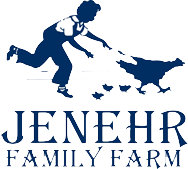I’ve always been fascinated how things work. My Mom will remind me often of my stuffed Santa Claus who said – Ho, Ho, Ho – when a string was pulled. By Mid May, that Santa was gutted with a secretly borrowed steak knife as I sat under a big maple in the front yard taking apart the record player-like mechanism that produced the string caused sound.
And while I love to understand how things work physically, now my interest tends more towards understanding how things come together from a management perspective (that’s a fancy way of saying – how do things get done). Especially when there are a lot of metaphorically moving parts and literally dozens of hands involved in the tasks and processes.
Running a farm has a lot of those moving pieces. One big part of getting produce from the farm to your kitchen involves a building of priorities. The picture at the bottom left shows Farmer Paul and right hand guy Nico working the farm process. Each week, these two walk the farm, go through every inch of the farm - greenhouses, hoophouses, haygroves and the fields. From there, they formulate the first draft of the CSA and market produce list along with all the crew jobs and tractor work for the next week.
It’s a process that involves last week’s list, slots for items coming next week and the three-weeks following. It involves field numbers and hoophouse names, a reminder of who on the crew does what best and how to fit it all into the coming week along with several others adding revisions and suggestions. On top of that, theres an alternate list, just in case something doesn’t go as plan (about 20% of the time) from weather that alters field work schedules to greens that bolt or grow faster than expected.
Posted in my office is a sign – Proudly Stolen Elsewhere. When it comes to systems, we observe and talk to a lot of people about what works for them. From manufacturing to car sales, accounting companies and a few other farmers. We talk, we tour, we analyze, take apart and then re-assemble a collection of different ideas adapted to what we do at the farm.
Implementation, is the hardest part, often teaching an old dog new tricks. I always thought that growing organic produce was the hardest part of the farm. Its not - after nearly 20 years Farmer Paul will tell you that it’s creating a process for keeping everything flowing that’s the most difficult. That figuring out each persons’ strengths, avoiding their weaknesses and keeping all the ducks in a row is the biggest challenge of growing at JenEhr. He’ll also tell you it’s the part he likes the least – would much rather be on the tractor, moving irrigation or trellising tomatoes than doing the “paperwork” required of running the farm.
But the twice a week, the Walk-About forms the basis for all the other things that happen - where weekly more than 600 labor hours are expended to bring you fresh organic JenEhr produce – Enjoy.

